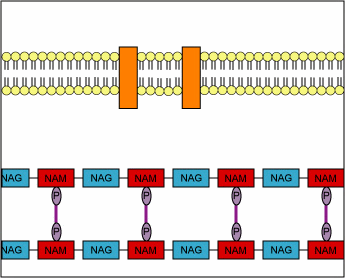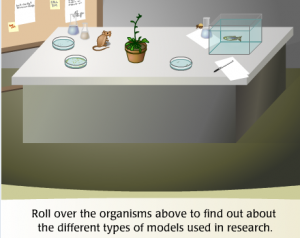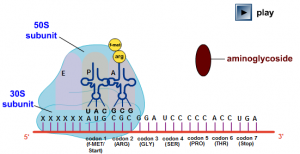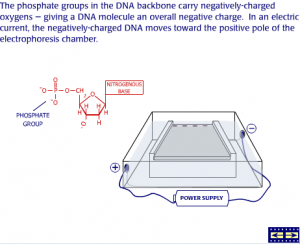Peptidoglycan is a polymer consisting of amino acids (peptido-) and sugars (-glycans) which coats the plasma membrane of bacteria to form a mesh-like layer outside it, forming the cell wall. This layer is made up of two sugar components consisting of alternate residues of β-(1,4) linked N-acetylmuramic acid and N-acetylglucosamine. Attached to the nitrogen of the N-acetylmuramic acid is short peptide (amino acid) chain of 3-5 amino acids. The peptide chain of one strand can be cross-linked with the peptide chain of another strand forming a mesh like network.
There are two versions of this animation available – an older version and a newer version.
1] Older Version

2] Newer Version
[swfobject]1209[/swfobject]
The structural role of the peptidoglycan layer is to provide support to the bacteria. It helps maintain the osmotic pressure of the cytoplasm and also gives the structural strength. If the peptidoglycan layer is weakened, the bacteria will die due to influx or efflux of excessive water into the cytoplasm. Therefore the synthesis of the peptidoglycan layer is essential to bacterial survival.
The following animation has been supplied by Dr. Gary E. Kaiser from the Community College of Baltimore County– and it illustrates the formation of new peptidoglycan layer. The transcript from his website states:
“New peptidoglycan synthesis occurs at the cell division plane by way of a collection of cell division machinery known as the divisome. Bacterial enzymes called autolysins, located in the divisome, break both the glycosidic bonds at the point of growth along the existing peptidoglycan, as well as the peptide cross-bridges that link the rows of sugars together. Transglycosidase enzymes then insert and link new peptidoglycan monomers into the breaks in the peptidoglycan. Finally, transpeptidase enzymes reform the peptide cross-links between the rows and layers of peptidoglycan to make the wall strong“
Antibiotics such as penicillin, vancomycin and bacitracin are known to inhibit the formation of this peptidoglycan layer and thereby kill the bacteria.
References
1. Prescott, L. M., J. P. Harley, and D. A. Klein. 2005. Microbiology, 6th ed. McGraw-Hill Publishing, New York, N.Y.
2. Tortora, G. J., B. R. Funke, and C. L. Case. 2007. Microbiology: an introduction, 9th ed. Pearson Education, Inc., San Francisco, Calif.




I gained more from here.